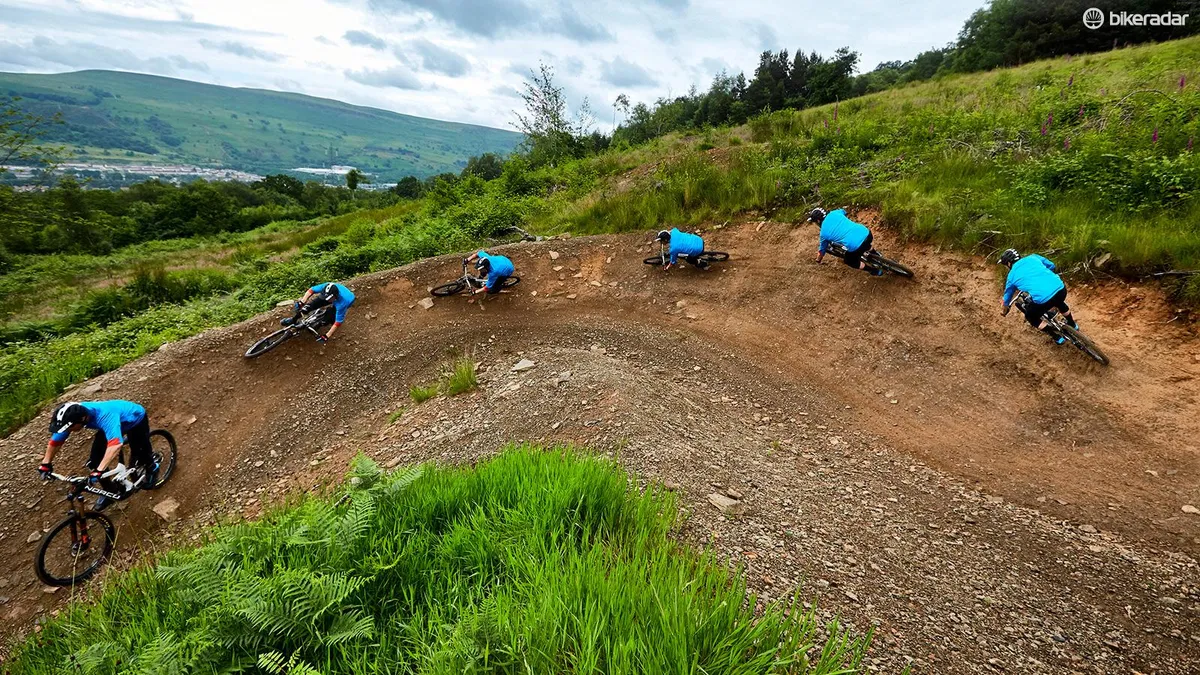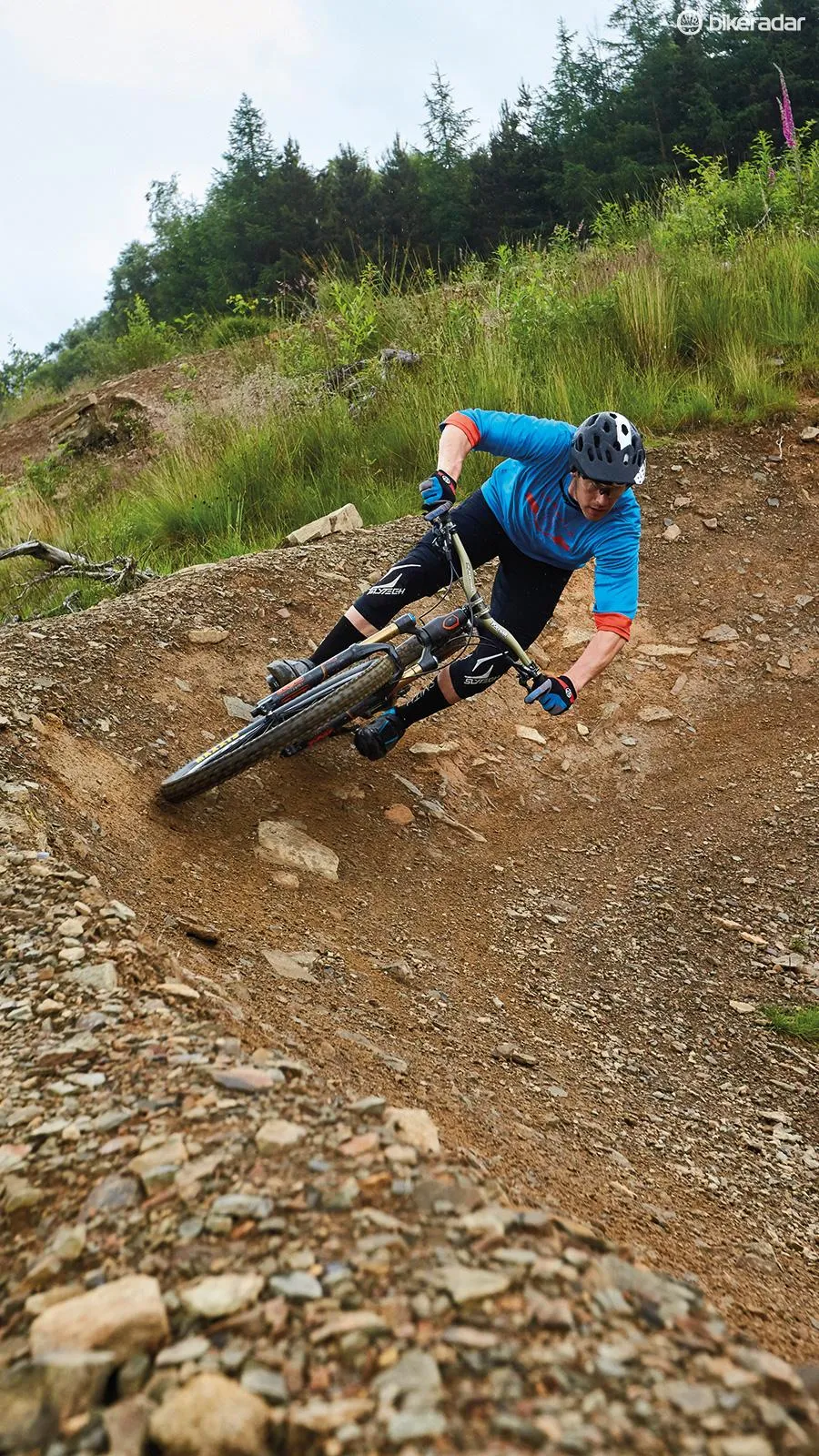Bryn Atkinson is one of the first crop of Australian downhillers to make waves on the World Cup circuit, Bryn’s ridden on teams alongside Sam Hill and Nathan Rennie, and has chalked up a string of top 10 results. Here he gives us a few tips on riding berms like a pro.
Basic tips
1. Entry point
As with learning any skill, I’d recommend you back off a little and ride at about 90 percent. Slow things down until you’ve perfected the technique. Once you’ve spotted the entry, look for anything that might disrupt your traction and avoid it — or, if you can’t avoid it, be smooth over it. Remember, exit speed is what you’re after, so going in full speed and blowing the turn will only slow you down for the next section.
2. Into the middle
This is where you want to be leant over and settled into the berm. It’s good to keep your outside foot down (at about 4 o’clock on a left-hander) and your inside foot up (about 10 o’clock). Try to keep any body movements to a minimum and look towards your exit. Don’t touch the brakes while you’re in the turn.
3. Exit point
Hopefully by this point, having entered at a controlled speed and stayed on a nice smooth line, you are carrying some good momentum as you come out of the berm, ready for the next obstacle. If not, get up there and do it again — there’s nothing that’ll make you better at cornering more than repetition.
Advanced Tips
Once you’ve mastered the basics, you can think about finessing the turns…
1. Entry position
Newton’s third law states: for every action, there is an equal and opposite reaction. Consider this when cornering. If you enter a corner on the inside line you will end up being pushed to the outside on exit. Likewise, if you stay outside on the entry, you will have more time to come out of the corner on the inside, giving you time to maybe avoid some holes or roots.
2. Traction
You can use gravity and G-forces to make quick changes in direction. Any time your tyres are heavily pressed into the ground, like through a G-out or landing from a jump, you will almost never slide out (unless of course your tyres or suspension are too soft, then everything will bottom out). If I need to make a quick pivot or change in direction, I’ll make sure I preload my suspension and tyres so I have ultimate traction.
3. Practice
These are great things to practice while following a friend — experiment with different lines to see what works best for you. Some riders are better at sneaking around the inside, while others prefer to rail the outside. Keep practicing and play around to find what you’re best at, and keep it fun!

